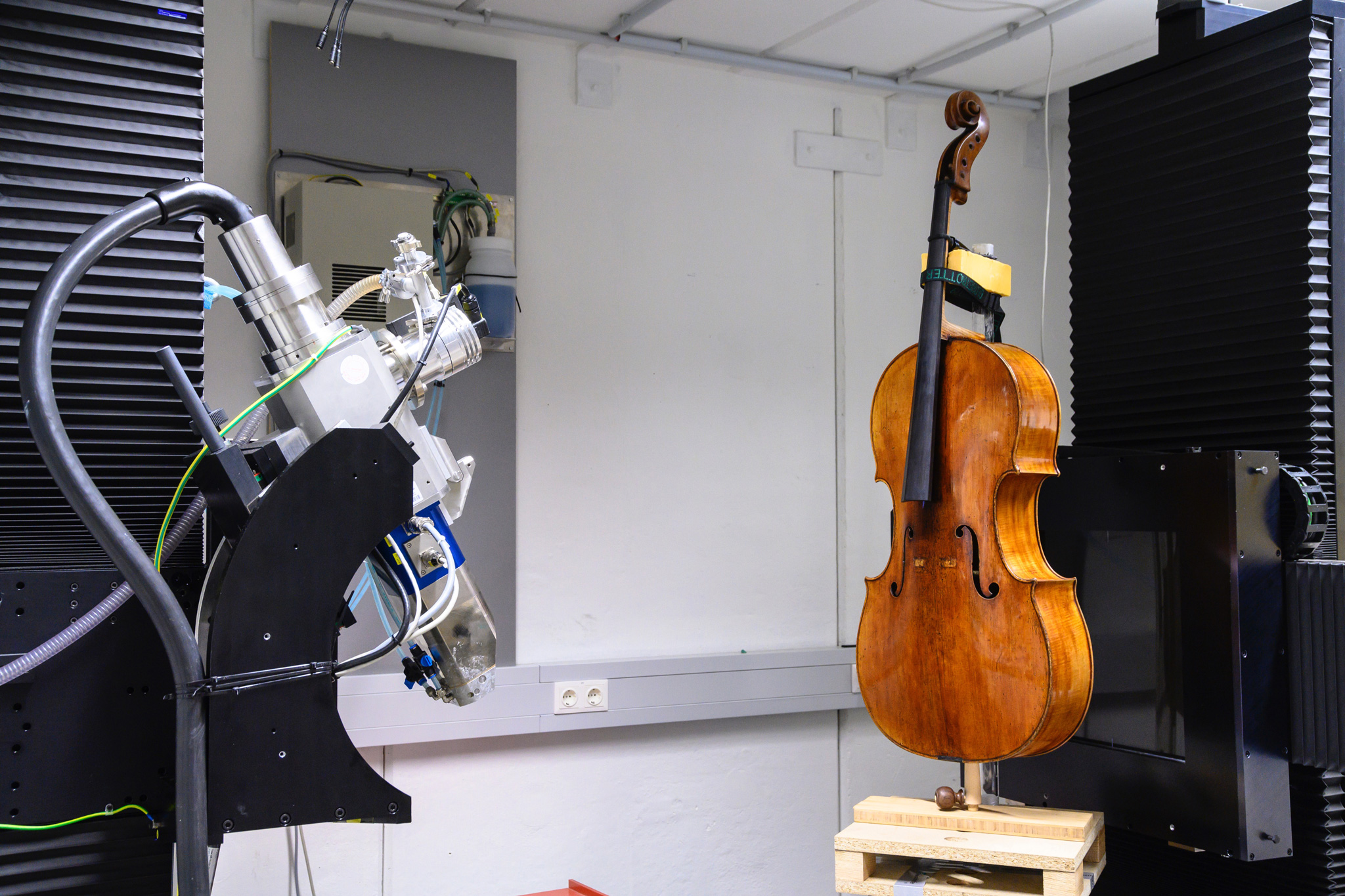3D CT is used to determine if the restoration of a historic Stradivari cello was successful
Restoration work on musical instruments is always a balancing act: the art is to preserve the original sound as faithfully as possible while restoring or even replacing the majority of the sound-producing components. In the case of the “Barjansky" cello, extra special care was needed because the instrument was crafted by legendary master luthier Antonio Stradivari. The instrument is named after the Russian virtuoso Alexandre Barjansky.
Its restoration involved replacing the inner lining, which was over 300 years old, with a new lining produced by a CNC milling machine. To evaluate the results of the restoration work, the owners of the culturally and historically significant musical instrument called on the X-ray experts at the Fraunhofer Development Center for X-ray Technology EZRT as part of the MUSICES research project.
For this project, funded by the German Research Foundation, the Germanisches Nationalmuseum (GNM) in Nuremberg joined forces with the EZRT to develop guidelines and procedural instructions for the three-dimensional computed tomography (3D CT) of musical instruments. State-of-the-art 3D CT was used to precisely measure the body of the valuable cello to ensure that the restored lining was an exact fit.
The customer, ALAGO Art & Strings GmbH, is very satisfied with the results. “We were so pleased that high-resolution CT scans made it possible for us to confirm that the new lining fits accurately,” says publisher and Stradivari expert Jost Thöne.
He will be publishing a study of the computed tomography examination of the Barjansky cello in early 2021 as part of his monograph and unique documentation of this extraordinary instrument. And the practical test after the restoration work revealed that the cello delivered a brilliant performance with exceptional sound.
